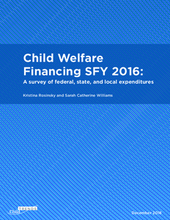Displaying 1031 - 1040 of 2214
Child Trends conducted this 10th national survey of U.S. child welfare agency expenditures to promote an understanding of the challenges and opportunities agencies face in serving vulnerable children. This report is part of an array of resources compiled from the survey’s findings.
This article suggests that financial supports for adoption could be extended by introducing Child Development Accounts for children adopted from foster care in New South Wales, Australia.
The aim of the study is to understand the perceptions of court‐involved adolescent girls in residential treatment (40% delinquency, 60% foster care/child abuse and neglect) on school climate and factors that affect their mood in school.
This study examines the effects of youth empowerment programs (YEPs) on the psychological empowerment of young people aging out of foster care.
This study explores how foster care experiences can impact support network functionality as young people exit the foster care system.
This study aims to test Independent Living Services (ILS)'s effects on educational attainment and employment of foster care youth.
In this documentary episode from Channel 4 in the UK, Lemn Sissay meets seven young people who are in the care of their council and sets out to help them express their experiences through words and perform them to a packed theatre of decision-makers.
This article provides an overview of complex trauma and its effects, with a focus on attachment concerns.
In this article, the author provides a synopsis of some current statistics about foster care and the experience of the foster care system in the US and offers an overview of a handful of relevant grief theories and expend a call to those within the field to develop more unique grief theories and interventions for children in the foster care system.
In this study, concept mapping was used to identify the needs of nonkinship foster parents from Caucasian ethnicity who care for unaccompanied refugee minors (URM) in Flanders (Dutch speaking part of Belgium).

